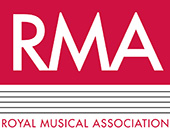The Early Modern Soundscapes Conference, hosted by Liverpool John Moores University, took place online between 5th–9th July 2021 and brought together 348 delegates from 35 countries. This inspiring, thought-provoking event was the culmination of a two-year international collaboration and research network on ‘Soundscapes in the Early Modern World’, which has sought to re-examine how sonic interaction shaped identities c. 1500-1800 and how we can engage with historical soundscapes. Funded by the Arts and Humanities Research Council, and with support from partners including the National Trust, the Wellcome Collection, and the University of British Columbia, ‘Soundscapes in the Early Modern World’ has been led by Principal Investigator Rachel Willie (LJMU), and co-Investigator, Emilie Murphy (York).
Four outstanding plenary papers brought together a wide range of interdisciplinary approaches to sound studies. On 6th July, Alexander Fisher (UBC) gave the opening paper on ‘Of Virgins, Hosts, and Heavenly Sirens: Hearing the Sonic Imaginary of German Catholicism, 1580-1650’. The next day, Rosa Salzberg (Warwick) gave a talk about ‘The sounds of the city: listening to an early modern migropolis’. On 8th July, Thomas Irvine (Southampton) spoke on ‘The Noise Big History Makes: A Global History of Sound for the Anthropocene’. On the final day, Katherine Larson (Toronto) closed the conference with a paper on ‘The Songscapes of Early Modern Women’.
Further highlights from the conference included two exciting keynote roundtables. ‘Recreating Soundscapes’ led to interesting conversations between chair Mariana Lopez (York) and panellists Peter Falconer (Southampton), Andy Popperwell (LSBU), Abigail Wincott (Falmouth) and Laura Wright (Oxford). Building on the recent Critical Race Conversations at the Folger Shakespeare Library, the second plenary roundtable was on the theme of ‘Sound and Race’, with insightful contributions from Katherine Butler-Schofield (KCL), Nandini Das (Oxford), Sarah Dustagheer (Kent), Jennifer Stoever (State University of New York at Binghamton) and Wayne Weaver (Cambridge).
Global in outlook, one of the strengths of the Early Modern Soundscapes Conference was its commitment to expanding the geographical reach of the discussion beyond Eurocentric perspectives: Gardika Gigih Pradipta (Indonesia), spoke on ‘Lost in sounds: soundscape as a cultural narrative of Southeast Asia and Japanese society’; Thais Guedes Guida (UFPR, Brazil), discussed ‘Soundscapes and environmental education’; William Rees Hofmann (SOAS), spoke on ‘Listening to sound, emotion, and meaning in early modern Sufi texts from India’; Linda Sturtz (Macalester), gave a paper on ‘“Demonstrative arguments” from “instruments of thunder and of terror”: noise in early African-Jamaican holiday festivities’; Christopher Smith (Texas Tech), spoke on ‘Spaces, whistles, tags, and drum: irruptive noise in American streets’; and Iain Fenlon (Cambridge), discussed ‘Catholicizing Córdoba: the soundscape of a transformed city’.
Over the course of five days, recurring themes emerged from the conference. Sound can create acoustic communities of listeners, fostering a sense of togetherness that may be either spiritual or secular, as well as amplifying celebrations of nationalism. Alternatively, in the theatre, for example, sound can be a way of characterising otherness, difference, foreignness. Several of the papers picked up on the latter theme, covering wide-ranging topics such as the sounds of war, foreign accents, travel narratives and cross-cultural encounter, madness and social alienation.
The conference also invited reflection on the use of space in fashioning acoustic identity. Several of the panels explored the sounds of daily life in early modern urban centres, offering readings of street noise, church bells, royal progresses, clocks and other sounds of the city. Following Thomas Irvine’s plenary on the Anthropocene, a few of the papers took more environmental approaches to the topic, considering the representation of wild spaces and songbirds. During the ‘Sound and Race’ roundtable, the discussion returned several times to extreme weather phenomena. Panellists noted how Indian monsoons and hurricanes in the Bermudas have played an important role in whiteness formation and the colonial agenda, contributing to metaphors of chaos, devilry and cacophony. Undoubtedly, though, there is more work to be done on environmental themes, and the Early Modern Soundscapes Conference has surely set the direction for future investigation of the ecological soundscape: animal communication, biodiversity and the environmental humanities.
Throughout, the conference hashtag #EMSounds21 was humming with enthusiasm and informal conversation. Particular excitement was generated by the beautiful conference merchandise: environmentally friendly travel cups imprinted with an early illustration of eavesdropping from Athanasius Kircher’s Phonurgia Nova (1673). In addition, the organisers made innovative use of the possibilities afforded by the online format, scheduling regular breaks where speakers and delegates could informally mingle in the Coffee House.
All in all, the conference was a fitting testimony to the ground-breaking, interdisciplinary work of the ‘Soundscapes in the Early Modern World’ research network, confirming this as a vibrant and intellectually diverse area of study.
Sophie Battell is Senior Lecturer in English Literature at the University of Zurich.
